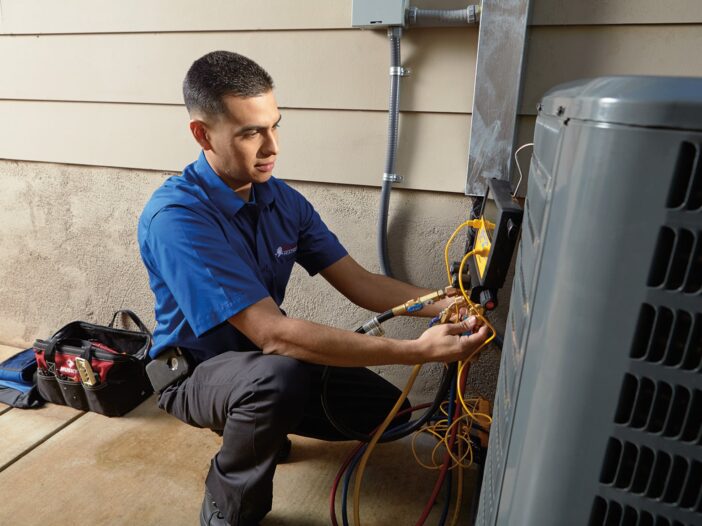
Homeowners who live in warm regions such as San Diego can benefit from using high-efficiency air conditioning, just as homeowners who live in colder regions gain from having high-efficiency heating systems installed. Because homeowners in our area use their air conditioners for a majority of the day over a long cooling season, they can quickly get a return on their investment.
It will cost you more to purchase a high-efficiency A/C, but the payoff can be significant. With better technology powering your equipment, it will last longer and have a higher potential for energy savings.
The minimum standard set by the government for air conditioning efficiency, known as the seasonal energy efficiency ratio (SEER), is 13. If you have a very old system, possibly rated with a SEER of 8, you’ll nearly double your energy-saving potential just by upgrading to the minimum standard.
High-efficiency air conditioning, however, starts at a SEER of 16 and can reach as high as a SEER of 23. Imagine the energy-savings potential when upgrading from a SEER of 8 to a SEER of 23 —almost triple.
The reason that these higher-efficiency systems can reach previously unimaginable capacity? The components inside the A/C. In general, high-efficiency air conditioning utilize:
- Two-stage compressors, which function at a lower capacity, using less energy during mild temperatures and ramping up to higher speeds only during extreme weather. The end result is longer, more efficient cooling cycles.
- Advanced motors, such as an electronically commutated motor (ECM), which uses less electricity to operate.
- Variable-speed air handlers, which operate much like two-stage cooling, but instead control the air handler, which will distribute just enough air to stay comfortable, according to the weather. This feature is also able to handle humidity better, because it tends to run continuously throughout the day at lower speeds.
- Better coils, such as a thermal expansion valve (TXV), allow more precise delivery of refrigerant, also based on the amount of cooled air necessary at any one given time.

